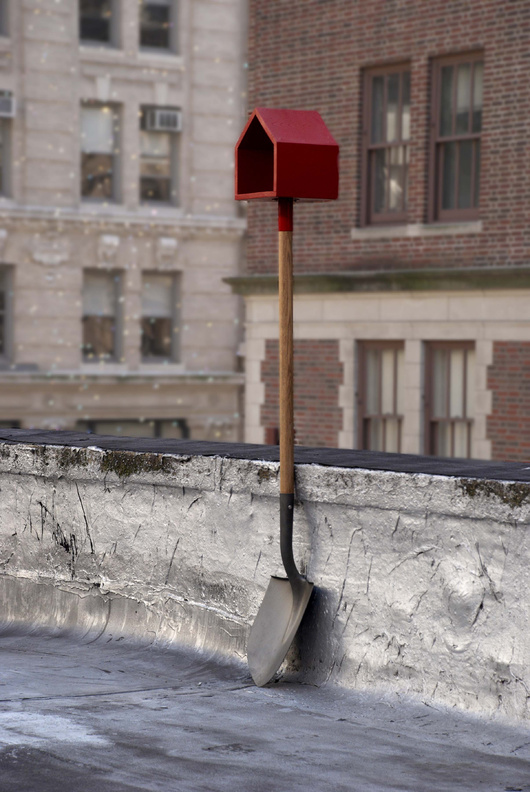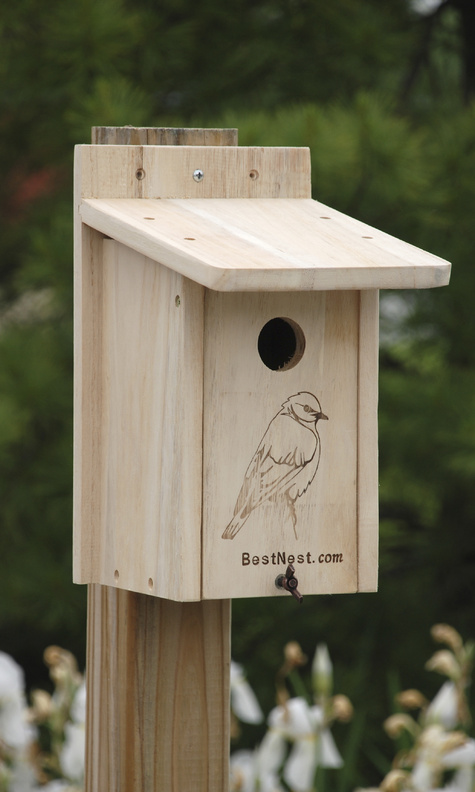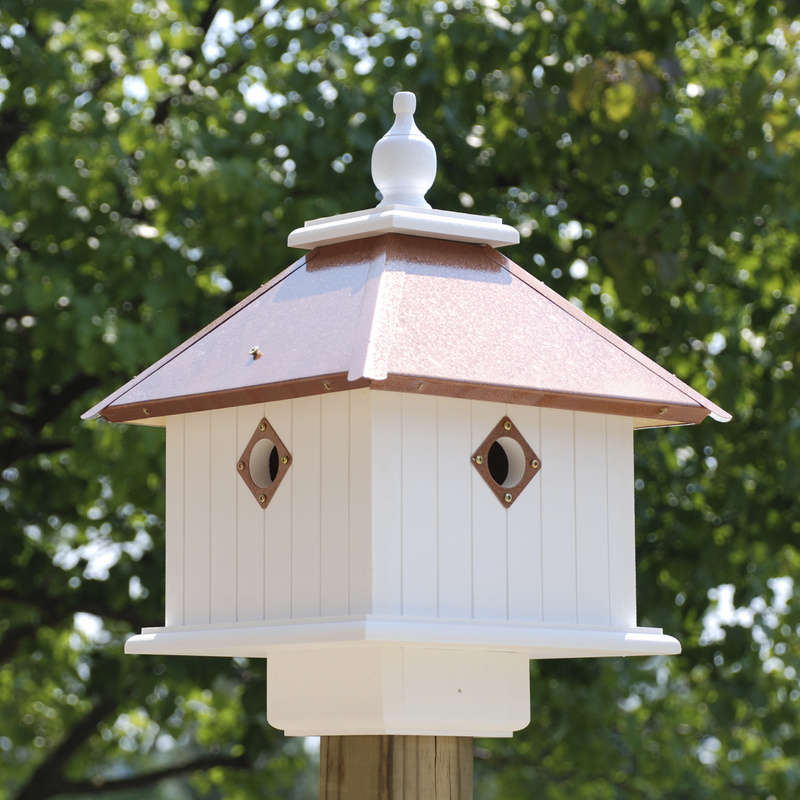Watching our little avian neighbors enjoy the backyard birdbath and feeder is one of life’s quiet pleasures. But when night falls, they too need a place to sleep.
Designers and craftsmen have turned their creative talents to the task. Some of the results might make you wish you could downsize yourself and grow some wings.
First, some general tips about choosing and installing birdhouses:
To deter birds’ natural predators — squirrels, cats and even other birds, such as hawks — BirdFeeders Direct, based in Guelph, Ontario, suggests placing the house in an open space away from underbrush or hedges. Consider customizing it if necessary with a flap, or making holes and perches too small for unwanted birds.
Birds can be fussy about where they’ll live. The male house wren builds several nests; he gives his new mate a tour and she chooses her favorite. North American birds don’t nest near others of their species; purple martins are the exception.
Gene Planker of Wild Bird Watching offers a number of classic cedar houses, including a nesting shelf for robins and doves. He cautions against buying large, multi-room houses unless they’re specifically designed for purple martins.
“They’re fine as pieces of art, but not practical for birds,” he said. “They may attract house sparrows, which we try to discourage, as they harm many of our native species.” Fiercely aggressive, sparrows will destroy songbird eggs and kill adults.
Robins, mourning doves and barn swallows prefer a nest shelf to an enclosed house — basically a birdhouse without a front. Nuthatches, chickadees, bluebirds and flickers like a cavity to nest in. Having several different shelters around your yard will ensure that a variety of birds have a place to nest, roost and take shelter from the weather.
Keep the house, as well as feeders and baths, away from windows. Window strikes are a major cause of death for backyard birds, as the large reflective surface looks just like more of the garden to them. If your space is tight, then at least affix deterring decals — solid, colorful ones, or images of birds of prey or spider webs. Alternatively, draw the blinds or tint the glass.
When buying or building a birdhouse, check for any sharp edges or materials that could cause injury. Make sure there’s room in the house for the type of bird you’ll be attracting to build a nest and raise eggs. Never paint the interior or buy one that’s been painted inside. Birds won’t use it, and the paint toxins released in summer will be dangerous.
Mount the house on a post or pole with a squirrel baffle if necessary, or from a tree limb, in a fairly sunny location. Avoid dense shade or intense sun. Make sure you clean it out thoroughly each year — experts recommend doing so in late fall or early winter.
For design-conscious bird lovers, Areaware has Kelly Lamb’s Buckminster Fuller-inspired ceramic geodesic dome house, perfect for swallows and warblers. Jan Habraken’s red roost is perched on a shovel handle; each time birds land on the house, the shovel wiggles — ostensibly stirring up worms and seeds.
BestNest.com sells a clever one that converts from summer nesting home to winter roost with the adjustment of a few sliding panels. The web retailer’s houses have thoughtful features like predator entrance guards and ventilating gaps.
Homegoods’ brightly painted birdhouses with little porches are inexpensive and charming.
Fabulousbirdhouses.com offers imaginative lighthouse, beach shack and fishing lodge designs.
If whimsy’s your thing, consider Denver-based Crooked Creations’ wonky yet wonderful birdhouse. Designed by Chad Blecha and built by Al Mowrer, the large Hobbit-y house even has indoor lighting.
And if budget’s really no object, look up Wilmington, Del., artisan Thomas Burke. While he does call them birdhouses, his structures are more like grown-up playhouses. The large, historically accurate homes can be clapboard, brick or stone, with downspouts and other details.
Burke takes custom commissions. One sold for $9,000, stood 8 feet tall and weighed 300 pounds. He recently built several birdhouses inspired by homes in Andrew Wyeth paintings. Perfect for art collectors, perhaps. But your backyard finch will no doubt feel perfectly at home in a modest little box.
Send questions/comments to the editors.






Success. Please wait for the page to reload. If the page does not reload within 5 seconds, please refresh the page.
Enter your email and password to access comments.
Hi, to comment on stories you must . This profile is in addition to your subscription and website login.
Already have a commenting profile? .
Invalid username/password.
Please check your email to confirm and complete your registration.
Only subscribers are eligible to post comments. Please subscribe or login first for digital access. Here’s why.
Use the form below to reset your password. When you've submitted your account email, we will send an email with a reset code.